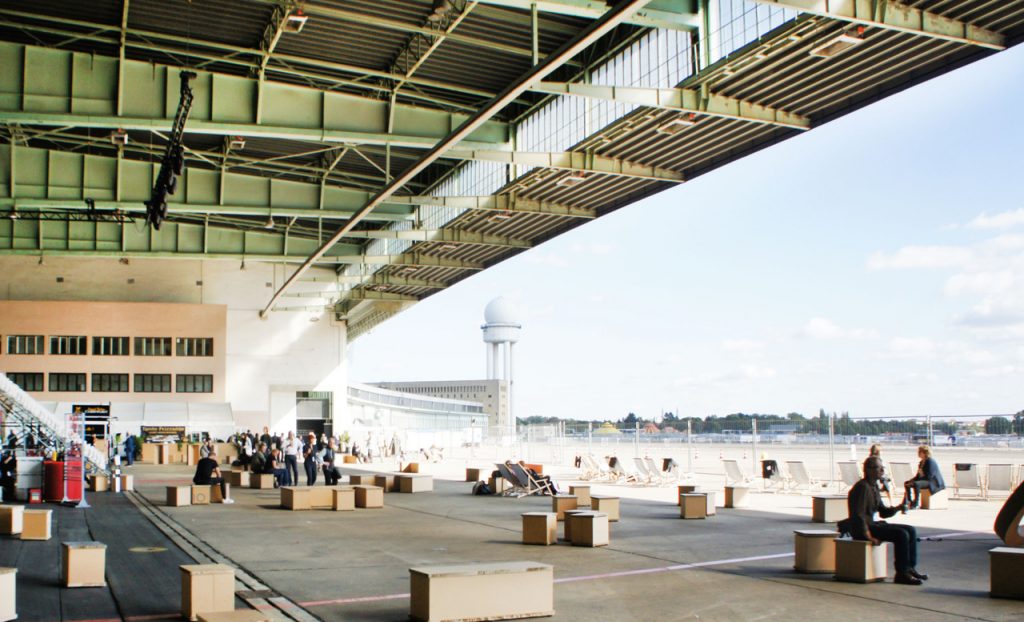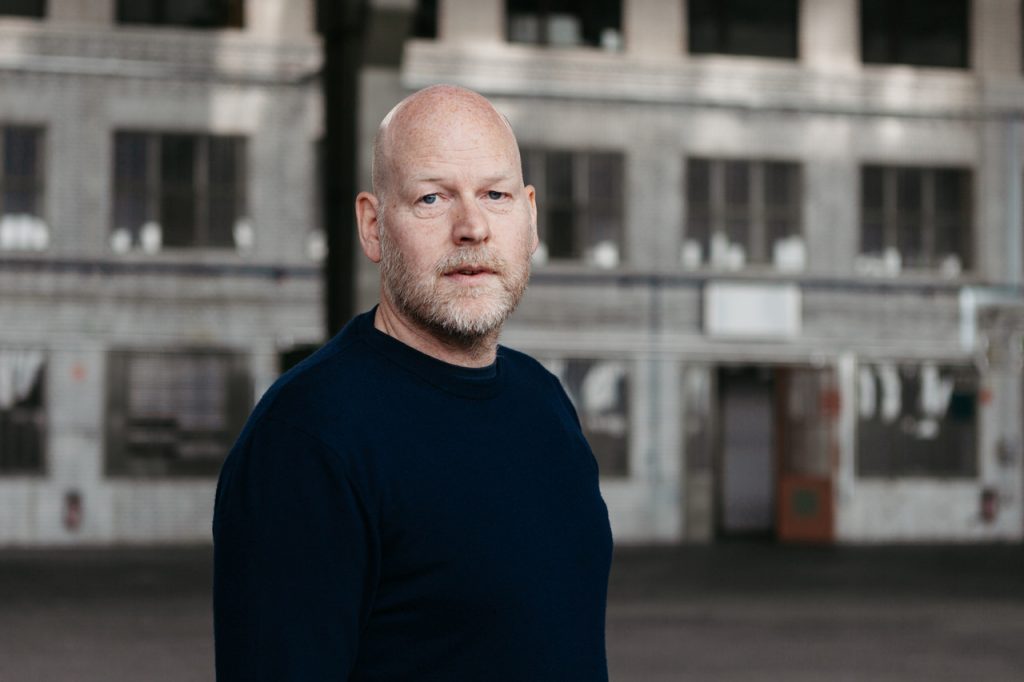Market
How an Unlikely Alliance Among the Government, the Art Industry, and a Nightclub Pulled Off a Socially Distanced Berlin Art Week
A year marked by flux and precarity has been met with innovation and collaboration.

A year marked by flux and precarity has been met with innovation and collaboration.

Kate Brown

It was an unusual sight. On Monday evening this week, collector Christian Boros stood with Berlin’s culture minister Klaus Lederer as they finished their cigarettes in front of Berghain nightclub before heading past the bouncer and into a press preview for an art show they co-funded.
The show, which started three months ago as a patchwork idea to help both Berghain and the city’s artists recover lost income, has emerged as a polished exhibition featuring the work of more than 100 Berlin creatives. Just as notably, it also represents the first collaboration among the senate, a private collector, and a techno club.
New interim models like this are cropping up all over town during Berlin Art Week. A year marked by flux and precarity has been met with innovation and collaboration.
The strife of lockdown has largely ravaged Berlin’s cultural economy—its main draw. Yet there is a bright side: for the first time, new worlds have collided. The Berlin Biennial, the well-cultivated Gallery Weekend Berlin, and the catch-all Berlin Art Week are all occurring at the same time for the first-time ever alongside a slew of stopgap partnerships.
“It’s been a stressful six months, but today is beautiful,” Lederer told a group of journalists inside Berghain’s concrete halls. Around this time last year, he recalled, art dealer Johann König had criticized the government and Berlin Art Week, which they back, for not being supportive enough of the art market. “He was on stage at Berlin Art Week press conference with me today,” Lederer added. (The squeaky wheel gets the grease—König’s new in-house art fair is on the official Berlin Art Week bill this year.)
If there was ever a city that knew how to jumpstart its own heart, it is this one.

Positions Berlin Art Fair. © Positions Berlin Art Fair.
Having been pushed from April to September, the city’s main market event, Gallery Weekend Berlin, opens tonight across the city. Many of its notable shows this year are of works by young artists based in Berlin, including painters Tobias Spichtig at Contemporary Fine Arts and Tina Braegger at Société.
“We are extremely happy and thankful we could open Gallery Weekend Berlin this year, and that so many great and passionate collectors and curators came to Berlin,” Maike Cruse, director of Gallery Weekend Berlin, tells Artnet News. The event was well-attended by collectors from Germany and other neighboring countries, as well as some from even farther afield, including London and New York.
Cruse adds that longer, socially-distanced VIP preview hours allowed for more in-depth conversations and subsequent sales. While there will be no large gala dinner, special guests will be hosted on the large rooftop at Haus der Kulturen der Welt on Saturday for a brunch.
The cancellation of the city’s main fair, the Berlin art fair, which was supposed to coincide with Berlin Art Week, has placed renewed focus on the seven-year-old Positions fair, which has emerged as the week’s de facto anchor. This year, it has doubled in size to allow for social distancing. Dealers like Kleindienst from Leipzig, Johann König, Thomas Schulte, and Galerie Michael Haas, all from Berlin, are showing there for the first time.
“Dealers know they can sell works here in Berlin and they know that Berlin needs a fair,” Positions’s director, Heinrich Carstens, told Artnet News. It’s something the government has also come to acknowledge after years of ignoring dealers’ and fairs’ calls for support. The senate provided Positions with funding to open another hangar of Tempelhof airport to allow for wider halls and booths. The Berlin mayor and Germany’s culture minister, Monika Grütters, will attend for the first time.
“They definitely learned something this year,” Carstens said—but he expressed skepticism that the support would continue beyond 2020.

Heinrich Carstens. Director of Positions Fair Berlin. Courtesy Positions Fair.
Schulte said he had been interested in participating in Paper Positions, dedicated to works on paper, for some time. Prices for works there start as low as €2,000, which is helpful in a year when collectors may not be eager to take financial risks. “We are happy to be able to support an art fair in Berlin, and to send an additional sign of normality into an international art community that so much craves encouraging messages of hope right now,” he said.
Positions is not the only art fair in town, technically. The brazen dealer Johann König is holding the second edition of his in-house “art fair,” which focuses on secondary market consignments. And while his fair may be on the official bill of Berlin Art Week, it has not won everyone’s favor. The dealer received a frustrated open letter from French artist Saâdane Afif, condemning him for selling his works in such a context.
There are other unorthodox efforts to be found outside the city center. Seven galleries, including Alexander Levy, ChertLüdde, Klemm’s, and Kraupa-Tuskany Zeidler, have taken over an under-construction former iron foundry to present the work of 23 artists under the name K60. Esther Schipper has grown to double its usual size for Gallery Weekend, occupying the old Blain Southern space for a show of Ugo Rondinone.
“More collaborative and shared platforms offer new opportunities for the local art scene to display works of art and open discourses on fruition and the distribution of art, which is markedly relevant in a city at the forefront of production, display, and creation of new ideas,” the dealers of K60 wrote in the press statement.
It seems unclear whether the collaborative, pioneering spirit among all players will last, but across the board, participants are eager for a small window of respite from what has been a difficult year of cancelled shows and for an opportunity to help dealers and artists with their bottom lines. At Berghain, for example, neither the club nor Boros will make a profit on any works sold. All sales are handled by the artists and their galleries.
It is likely that these new partnerships and innovations are an interim solution for a market still in flux. The question now, as the banner by Rirkrit Tiravanija hanging on Berghain’s exterior so aptly asks, is: what will this all mean for tomorrow?